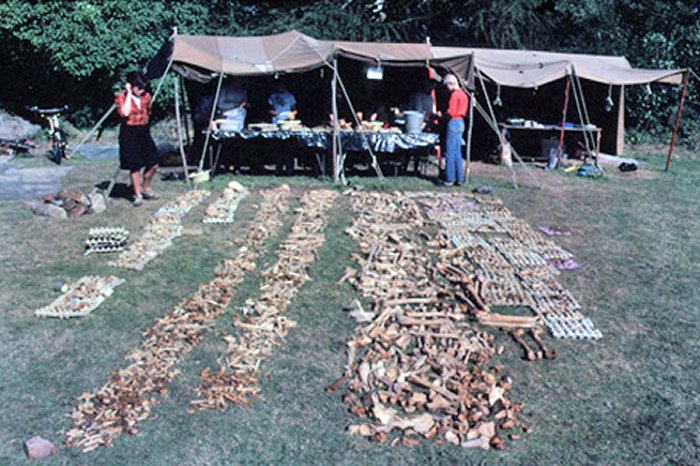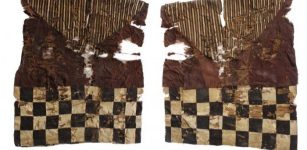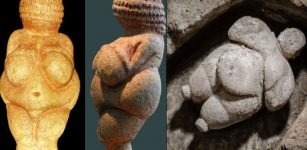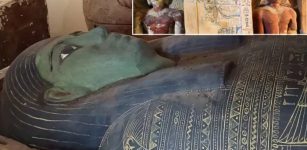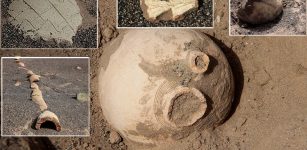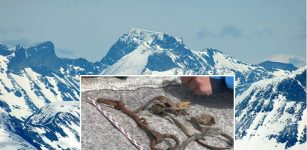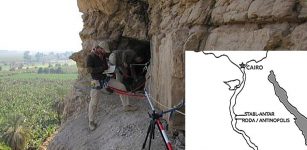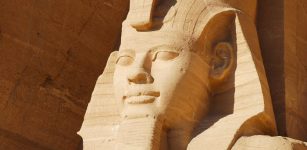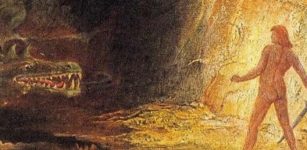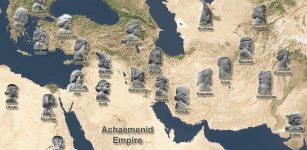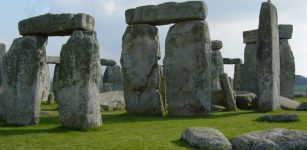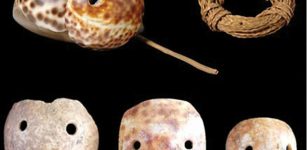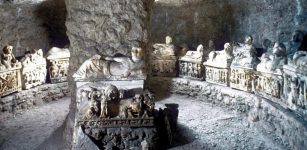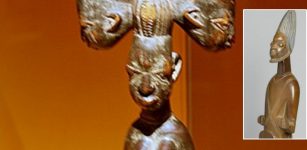Viking Age Mass Grave Reveals Gruesome Discovery At Historical Village Of Repton, England
AncientPages.com - Historical records state that the Viking Great Army wintered in Repton, Derbyshire, in 873 A.D. and drove the Mercian king into exile. Using radiocarbon dating scientists have examined a mass grave and discovered something gruesome.
As Ancient Pages reported in November, 2017, a Viking camp dated to the winter of 873-4, have been unearthed by a team of archaeologists from the University of Bristol.
It is located in the small village of Repton, Derbyshire and has been known since the 1970s. Repton has long been a subject of excavations.
One of the female skulls from the Repton charnel. Credit: Cat Jarman, University of Bristol
Although the remains were initially thought to be associated with the Vikings, radiocarbon dates seemed to suggest the grave consisted of bones collected over several centuries. New scientific research now shows that this was not the case and that the bones are all consistent with a date in the late 9th century.
The mound appears to have been a burial monument linked to the Great Army.
An Anglo-Saxon building, possibly a royal mausoleum, was cut down and partially ruined, before being turned into a burial chamber.
One room was packed with the commingled remains of at least 264 people, around 20 percent of whom were women. Among the bones were Viking weapons and artefacts, including an axe, several knives, and five silver pennies dating to the period 872-875 A.D. 80 percent of the remains were men, mostly aged 18 to 45, with several showing signs of violent injury.
During the excavations, everything pointed to the burial’s association with the Viking Great Army, but confusingly, initial radiocarbon dates suggested otherwise. It seemed to contain a mix of bones of different ages, meaning that they could not all have been from the Viking Age.
Overview of the charnel burial from the original excavations. Credit: Martin Biddle
Researchers from the University of Bristol have now re-examined the mass grave and new dating proves that all remains are consistent with a single date in the 9th century and therefore with the Viking Great Army.
“The previous radiocarbon dates from this site were all affected by something called marine reservoir effects, which is what made them seem too old.
When we eat fish or other marine foods, we incorporate carbon into our bones that is much older than in terrestrial foods. This confuses radiocarbon dates from archaeological bone material and we need to correct for it by estimating how much seafood each individual ate,” archaeologists Cat Jarman from the University of Bristol said.
The graves reveal that people of different ages and sexes were brutally killed. In one grave, archaeologists discovered two men, the older of whom was buried with a Thor's hammer pendant, a Viking sword, and several other artifacts.
See also:
Why Viking Ragnar Lodbrok Wanted To Kill His Son Ivar The Boneless
Mighty King Harald Hardrada- The Last Great Viking And Most Feared Warrior Of His Time
The man’s skeleton showed evidence of fatal injuries around the time of death, including a large cut to his left femur. Intriguingly, a boar’s tusk had been placed between his legs, and it has been suggested that the injury may have severed his penis or testicles, and that the tusk was there to replace what he had lost in preparation for the after-world.
Inside another grave scientists found four juveniles, aged between eight and 18. They were buried together in a single grave with a sheep jaw at their feet.
Next to them large stones may have held a marker, and the grave was placed near the entrance to the mass grave. At least two of the juveniles have signs of traumatic injury. The excavators suggested this may have been a ritual grave, paralleling accounts of sacrificial killings to accompany Viking dead from historical accounts elsewhere in the Viking world. The new radiocarbon dates can now place this burial into the time period of 872-885 A.D.
Bones from the Repton charnel during excavations. Credit: Mark Horton
“The date of the Repton charnel bones is important because we know very little about the first Viking raiders that went on to become part of considerable Scandinavian settlement of England.
“Although these new radiocarbon dates don’t prove that these were Viking army members it now seems very likely. It also shows how new techniques can be used to reassess and finally solve centuries old mysteries,” Jarman said.
The afterlife played an important role in the life of the Vikings. It was by no means uncommon to place various objects inside grave to prepare the deceased for their journey to the next life.
As we mentioned earlier on Ancient Pages, archaeologists have for example discovered that Vikings used to bury their children with extremely large and sharp knives. The purpose of placing these artifacts in the tombs is not entirely clear, but one possibility is that the knives should help the little ones in their afterlife.
AncientPages.com
Expand for references


